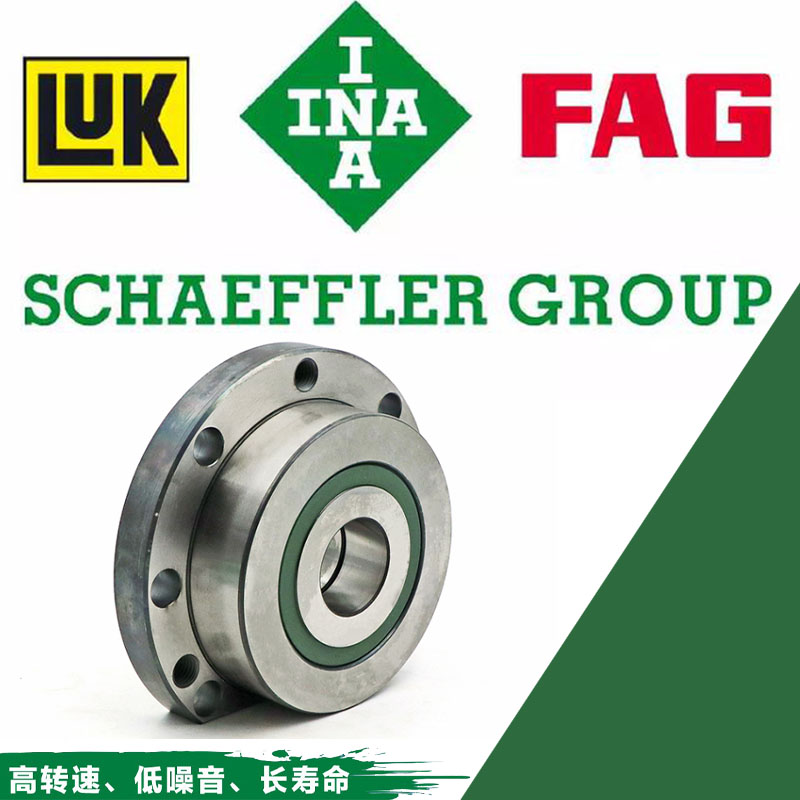Many industrial equipment have high-speed bearings, and high-speed bearings should be specially selected with suitable grease. If improperly selected, it will have a blocking effect on the bearing, increasing the friction
Large, it is easy to cause the bearing to heat up.
High-speed bearings are most likely to cause high temperature. Improper high temperature during bearing operation is harmful to the bearing, and will accelerate the oxidation of grease and deteriorate the grease. choose the right
Grease, which prolongs the life of bearings and grease. Ordinary general-purpose grease is not suitable for high-speed bearings. It depends on the size, speed, and operation of high-speed bearings
Depending on the operating temperature and other factors, select the appropriate grease.
When selecting a high speed bearing grease, the following aspects are important:
1) Base oil viscosity/viscosity: Lubricating grease is thickened lubricating oil, lubricating grease is also lubricated by oil, and viscosity is the most important indicator of lubricating oil.
Grades are classified according to viscosity. The viscosity of the base oil should be found correctly (ISO viscosity grade). If the viscosity is too high, it will cause stagnation, increased friction, and heat generation; if the viscosity is too small,
Insufficient oil film thickness can easily cause bearing wear. The viscosity should be selected according to the requirements of the manufacturer, and the correct grade should be selected.
2) NLGI consistency grade: Grease grades are classified according to the NLGI consistency grade. NLGI consistency grade is also called cone penetration and needle penetration. Grease
The degree of softness and hardness, and NLGI consistency grade should also be selected according to the requirements of equipment manufacturers.
3) Grooving characteristics: Greases used for high-speed bearings should choose greases with good groove-forming characteristics.
Reduces friction and heat.
4) Dropping point: The dropping point of the grease should be as high as possible above the highest temperature encountered in use.
5) Types of thickeners: Different thickeners will affect the dropping point and oil separation characteristics of the grease. A high dropping point and good oil separation characteristics (static oil separation and dynamic oil separation) should be selected
oil) grease.
Below, we discuss these characteristics separately, as well as some parameters related to the selection of high-speed bearing grease.
1. The speed factor of the bearing:
The speed factor of the bearing can help us determine the NLGI consistency grade of the grease, as well as the base oil viscosity grade of the grease. There are two calculations for the speed factor of the bearing
One method is the DN value of the bearing, and the other is the NDm value. in:
The DN value of the bearing = the rotational speed of the shaft * the inner diameter of the bearing
The NDm value of the bearing = the rotational speed of the shaft * (bearing inner diameter + bearing outer diameter) /2
Note: The unit of speed is rpm, and the inner diameter and outer diameter of the bearing are calculated according to the diameter, and the unit is mm.
When designing bearings, bearing manufacturers will calculate the appropriate grease consistency and base oil viscosity based on the bearing speed and size.
Next, just use grease according to the manufacturer’s suggestion.
2. Base oil viscosity of grease:
Grease is the lubricating oil after thickening, and the viscosity of the oil is the most important indicator of the lubricating oil. The base oil viscosity for general purpose greases is most commonly ISO 220cSt (sport
Viscosity), such viscosity is no problem for bearings with medium load and medium speed, but the higher the speed of the bearing, the viscosity of the oil needs to be reduced, otherwise it will damage the shaft
The operation of the bearing will cause a blockage, cause friction to increase, and the bearing will heat up as a result.
The calculation of the viscosity required by the bearing is based on the speed factor of the bearing, combined with the temperature during the operation of the bearing, and the corresponding viscosity is found from the viscosity-temperature curve of the lubricating oil.
degree value. For example, the NDm value of a bearing is 293125, the required viscosity is 7cSt, and the operating temperature of the bearing is 65°C. On the viscosity-temperature curve, the viscosity at 65°C is
Oil with a density of 7cSt is ISO 22~32cSt at 40°C (the viscosity index of the oil is 95). Note that the viscosity uniformity of industrial lubricants is tested at 40°C. Place
Therefore, the operating temperature of the equipment should be taken into consideration when selecting, and appropriate conversion is required.
In this example, if we use a general-purpose grease (base oil viscosity 220), then the viscosity is equivalent to 10 times what is actually required. If the viscosity is too high
Too much will cause the bearing to heat up, increase energy consumption, and shorten the service life of the grease.
3. Channeling characteristics of grease:
For high-speed bearings, grooving characteristics are an important indicator. Grooving characteristics can reflect the lubrication condition of grease at high speed. Grooving characteristics reflect the
Grease fluidity and consistency retention at high speeds, and torque development at high speeds. To detect the grooving characteristics of grease, the United States is used internationally
Federal Test Standard 791C-3456.2 method (Method 3456.2 of Federal Test Method Standard 791C). In this test, the lubricated
Grease is applied to a specific container, the surface is smoothed, a steel sheet is used to press in the grease, a groove is pressed out, and the experiment is carried out under certain temperature and conditions for 10 seconds. then check
Check whether the grease flows back into the groove. If the grease flows back into the grooves, the grease has poor channeling properties (non-channeling). If no grease flows back
In the groove, the grease’s channeling characteristics are qualified (channeling).
Grease with good groove-forming properties is easier to be squeezed out during use, and can maintain a stable consistency after squeezed out, which is very important for high-speed bearings. Chenggoute
Good lubricating grease can reduce torque during high-speed operation, reduce friction, and reduce heat generation during operation. Grease with poor groove-forming properties tends to flow back to the running parts,
Forms friction and friction against the rollers.
4. Thickener type:
Grease is named after thickener, so the type of grease can reflect the type of thickener. For example, the thickener used in lithium-based grease is lithium-based thickener.
Grease uses viscose as a thickener.
Grease is thickened lubricating oil, and the thickener acts like a sponge, keeping the lubricating oil within the thickener’s fibrous network. Different types of thickeners, fibers
The structure is also different, which will affect many aspects of the performance of the grease, including the above-mentioned channeling characteristics, oil separation, dropping point, consistency stability (shear stability
sex). Some thickeners have longer fibers, some shorter. If the fibers of the thickener are shorter, the appearance of the grease will look smoother and finer. Lithium-based grease,
The thickeners of calcium base grease, polyurea grease, lithium complex grease, and calcium sulfonate complex grease are all short fibers. These greases usually have better channeling properties and are easier to pump.
Easy, and the friction caused by high-speed operation is relatively small.
The thickener fibers of sodium-based grease, aluminum-based grease, and barium-based grease are longer, and the groove-forming properties of these greases are poor. Longer fibers also have the disadvantage of poor shear stability.
During mechanical operation, the grease is subjected to continuous rolling and shearing, and the long fibers are more likely to be cut off, and the consistency of the grease becomes thinner after cutting. During high-speed operation, the mechanical shear
Shear rates are higher, so more attention should be paid to the shear stability of the grease. If the fibers of the thickener are longer, not only are they easier to shear, but the
It will gather on the moving parts of the bearing rollers, aggravate the resistance and friction, further cause the temperature to rise and intensify the shearing effect.
5. NLGI consistency grade:
The speed factor of the bearing, operating temperature, load and other conditions jointly affect the required NLGI consistency. The equipment manufacturer will give a recommended value, and the user should follow the recommended value to
Choose the appropriate NLGI consistency grade based on actual usage.
The consistency of grease is also called cone penetration and needle penetration, which characterizes the softness and hardness of grease. NLGI divides the consistency into 9 grades. From 000 to 6, the consistency gradually increases.
Incrementally, the hardness gradually increases. The larger the number, the thicker the consistency, the harder the grease, and vice versa.
6. Bearing category:
There are also many types of rolling bearings. The rollers can be balls, cylinders, cones, spindles, etc. The shape of the roller is different, which affects the viscosity of the base oil.
Seeking, NLGI consistency, grease change cycle. The reason for this is that rollers of different shapes have different contact areas with grease. Rollers with a larger contact area are easier to
Easy to squeeze base oil out of thickener, standard ball bearings have small contact area. Bearings with a large contact area generally bear greater loads than ball bearings.
Bearings are more likely to cause base oil loss, requiring grease to have good oil separation properties.
7. Grease dropping point:
The dropping point of the grease must be higher than the maximum service temperature, especially for the grease used at high temperature, a high dropping point is a necessary condition. The dropping point is not equal to the maximum
High operating temperature, the maximum allowable operating temperature of the grease is generally 30°C~50°C lower than the dropping point. The standard for the determination of the dropping point of lubricating grease is ASTM D2265 (the old standard
Accurately ASTM D566), in the test, as the temperature rises, the grease will gradually change from a paste semi-solid to a liquid. When measuring the dropping point, the grease
As the temperature rises, it will gradually become a liquid state. We call the temperature at which the grease begins to drip the first drop of oil as the dropping point. When the temperature reaches the dropping point, the glue of the thickener
The body structure has changed, and the base oil cannot be adsorbed and maintained normally.
Although the dropping point is an important indicator of the high-temperature performance of grease, it is not the only indicator. When selecting high-temperature grease, you should not only look at the high dropping point. The dropping point characterizes the thickener
It is a high-temperature performance, but whether the base oil can withstand such a high temperature cannot be explained by the dropping point. Therefore, the selection of high-temperature grease should not only depend on the dropping point, but also
Take into account the performance of all components at elevated temperatures.


 SKF Bearing
SKF Bearing NSK Bearing
NSK Bearing FAG Bearing
FAG Bearing TIMKEN Bearing
TIMKEN Bearing INA Bearing
INA Bearing NTN Bearing
NTN Bearing KOYO Bearing
KOYO Bearing NACHI Bearing
NACHI Bearing